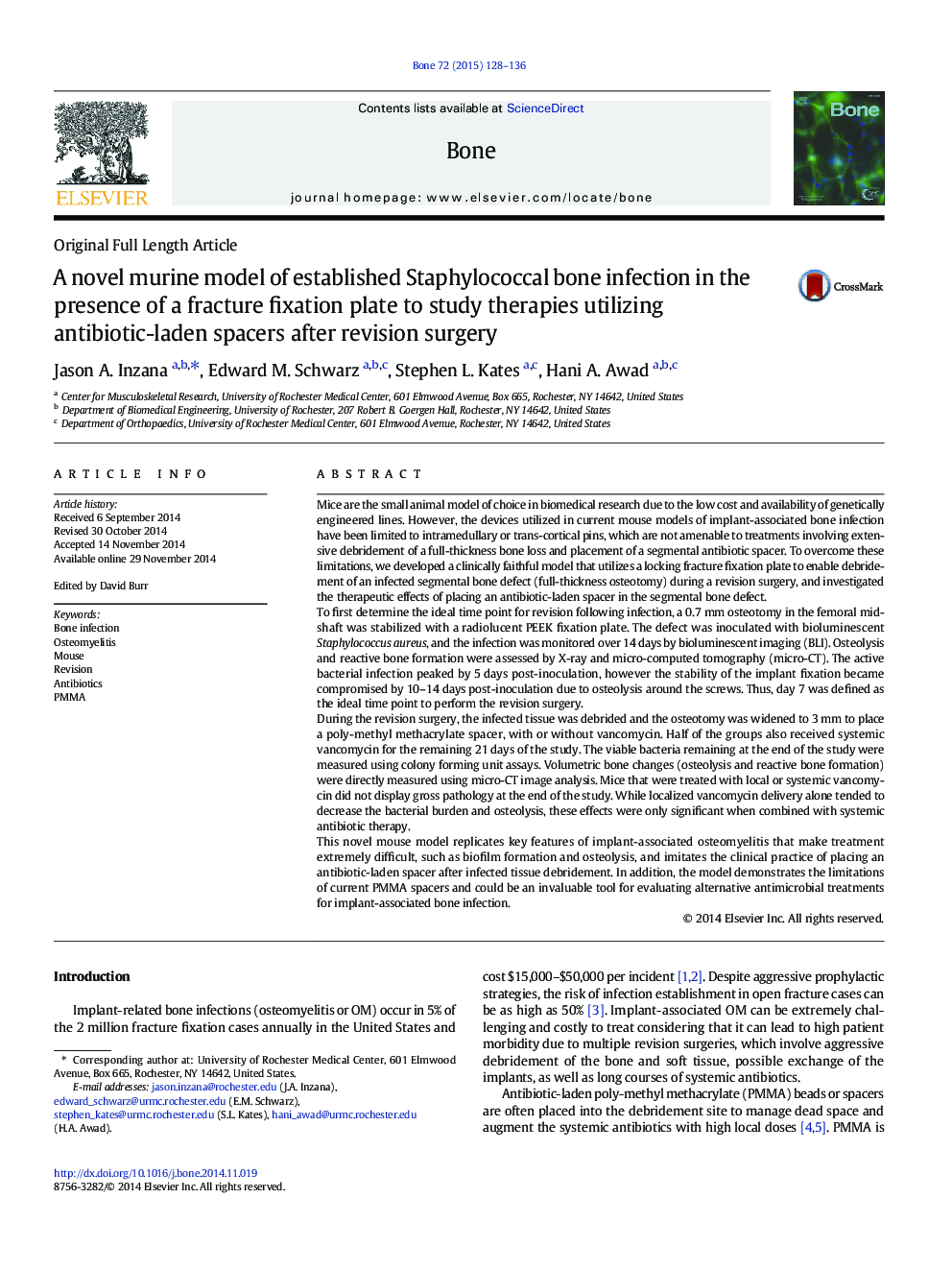| کد مقاله | کد نشریه | سال انتشار | مقاله انگلیسی | نسخه تمام متن |
|---|---|---|---|---|
| 2779178 | 1568147 | 2015 | 9 صفحه PDF | دانلود رایگان |
• We established a new mouse model of implant-associated bone infection.
• Revision surgery with debridement is possible 7 days after infection establishment.
• Local and systemic vancomycin each significantly improved outcomes.
• These antibiotic therapies were unable to eradicate the infection.
• New antimicrobial therapies can be studied with this clinically relevant model.
Mice are the small animal model of choice in biomedical research due to the low cost and availability of genetically engineered lines. However, the devices utilized in current mouse models of implant-associated bone infection have been limited to intramedullary or trans-cortical pins, which are not amenable to treatments involving extensive debridement of a full-thickness bone loss and placement of a segmental antibiotic spacer. To overcome these limitations, we developed a clinically faithful model that utilizes a locking fracture fixation plate to enable debridement of an infected segmental bone defect (full-thickness osteotomy) during a revision surgery, and investigated the therapeutic effects of placing an antibiotic-laden spacer in the segmental bone defect.To first determine the ideal time point for revision following infection, a 0.7 mm osteotomy in the femoral mid-shaft was stabilized with a radiolucent PEEK fixation plate. The defect was inoculated with bioluminescent Staphylococcus aureus, and the infection was monitored over 14 days by bioluminescent imaging (BLI). Osteolysis and reactive bone formation were assessed by X-ray and micro-computed tomography (micro-CT). The active bacterial infection peaked by 5 days post-inoculation, however the stability of the implant fixation became compromised by 10–14 days post-inoculation due to osteolysis around the screws. Thus, day 7 was defined as the ideal time point to perform the revision surgery.During the revision surgery, the infected tissue was debrided and the osteotomy was widened to 3 mm to place a poly-methyl methacrylate spacer, with or without vancomycin. Half of the groups also received systemic vancomycin for the remaining 21 days of the study. The viable bacteria remaining at the end of the study were measured using colony forming unit assays. Volumetric bone changes (osteolysis and reactive bone formation) were directly measured using micro-CT image analysis. Mice that were treated with local or systemic vancomycin did not display gross pathology at the end of the study. While localized vancomycin delivery alone tended to decrease the bacterial burden and osteolysis, these effects were only significant when combined with systemic antibiotic therapy.This novel mouse model replicates key features of implant-associated osteomyelitis that make treatment extremely difficult, such as biofilm formation and osteolysis, and imitates the clinical practice of placing an antibiotic-laden spacer after infected tissue debridement. In addition, the model demonstrates the limitations of current PMMA spacers and could be an invaluable tool for evaluating alternative antimicrobial treatments for implant-associated bone infection.
Journal: Bone - Volume 72, March 2015, Pages 128–136
